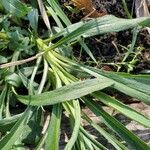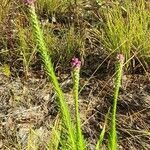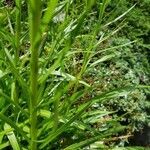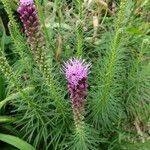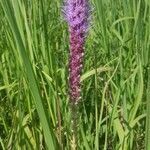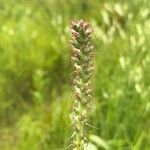Strict, 5–15 dm, ± hirsute in the infl (including the axis) or throughout, seldom glabrous; lvs numerous, linear or nearly so, the lower ones 10–50 cm × 3–13 mm, the others reduced upward; heads sessile, crowded in an elongate, densely spiciform infl; invol subcylindric or narrowly turbinate, 8–11 mm, its bracts tapering to an acuminate, conspicuously squarrose tip, or the inner ones sometimes blunter and loosely erect; fls 5–7(–12) per head, the cor 7–9 mm including the 2–2.5 mm lobes, glabrous or very nearly so within; pappus barbellate; 2n=20, 40. Moist or dry prairies and open woods; Ind. and Ky. to Minn., N.D., Tex., and Miss., and intr. e. to N.J. and w. N.Y. July–Sept.
